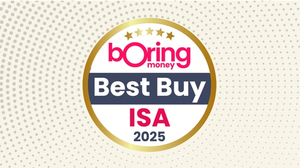Top 5 performing high-risk robo portfolios and ready-made funds of Q3 2022
14 Oct, 2022
2022... It's been a tough one for the best of us, and robo portfolios and ready-made funds haven't managed to get this far without taking a hit either. Net growth across high-risk portfolios has been quite muted in recent months, with only four making it into the green, while the rest are still holding onto losses.
We've rounded up the 5 top performing high-risk robo portfolios and ready-made funds, ranked by their net growth in Q3 2022, so you can compare the market and see which have fared best between 1 July and 30 September 2022. Click on each provider to read more about what we think of them, which of our awards they may have won, and what their customers have to say.
The portfolios and funds you see below are characterised as high-risk and the figures represent net growth (after charges). Scroll down to read more about how we've crunched the numbers.
5 best-performing high-risk robo portfolios and ready-made funds
Data correct as at October 2022.
Key terms:
Provider
The investment provider that manages your robo portfolio or ready-made fund.
Portfolio/Fund
The name of the robo portfolio or ready-made fund that is allocated to you by your investment provider. This will typically include a mixture of cash, bonds and shares at different proportions depending on your chosen risk level.
Risk Level
The perceived level of risk associated with your robo portfolio or ready-made fund. There are three main risk categories - low, medium and high - which we assign to each. Read more about how we allocate risk levels in 'Our Methodology' below.
Q3 2022
'3rd quarter'. The period between 1 July 2022 and 30 September 2022.
Q4 2021
'4th quarter'. The period between 1 October 2021 and 31 December 2021.
YTD
'Year-to-date'. The period between 1 January 2022 and the time that our data was collected (in this case, 30 September 2022).
Net Growth
The total growth of a portfolio or fund minus charges.
Our methodology
Boring Money holds test accounts with all of these providers and we use them to look at how our investments have changed on a monthly basis. Net growth refers to growth minus charges. Risk levels are based on equity allocation. For the purposes of this exercise, funds with an equity exposure of under 30% are considered low-risk, funds with 70+% equity are high-risk, and the rest are categorised as medium-risk.










